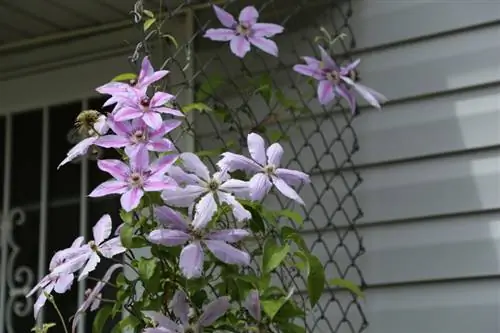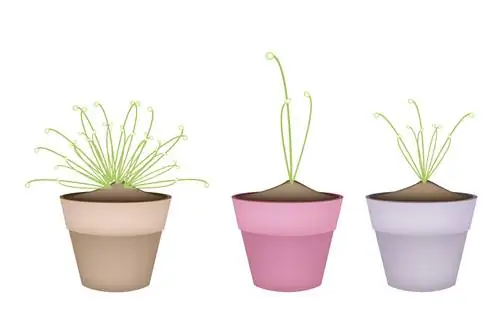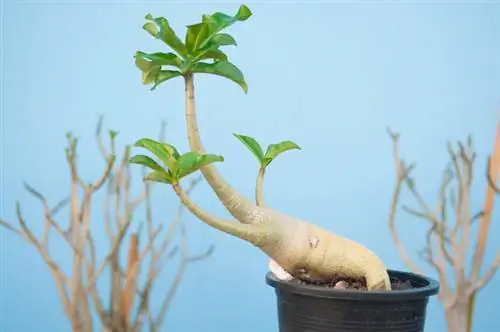- Author admin [email protected].
- Public 2023-12-16 16:46.
- Last modified 2025-01-23 11:22.
Every now and then it's time to put the Ficus Ginseng in a new pot. Depending on the growth rate of the individual plant, this can happen after just one year or as little as three years.

When and how should you repot a Ficus Ginseng?
Repotting a Ficus Ginseng should ideally be done in spring. Carefully remove the plant from the old pot, loosen the root ball and shorten the roots to fit the crown. Replace about 2/3 of the old soil with fresh soil and choose a new container with a diameter of about ¾ of the plant's height.
When is the best time to repot?
As is often the case with Ficus Ginseng, spring is the ideal time for repotting, ideally shortly before new growth begins. Apart from that, repotting may also be advisable at other times of the year. Possible reasons include, for example, a pot that is too small and the associated lack of nutrients or possible pest infestation.
Often the planter in which the Ficus Ginseng was purchased is not appropriate for the size of the tree. A small pot simply takes up less space in the store and when transporting it. It therefore makes sense to repot immediately after purchase. Even if the container becomes too small over the course of the year, the laurel fig is welcome to move.
It looks similar with a pest infestation. If you have successfully combated aphids or scale insects, you can wait and see whether they appear again after a while. Alternatively, it is also possible to repot the ficus and replace all of the soil. This is how you can remove any lice eggs that may have been deposited there.
Repotting a Ficus Bonsai:
- ideal time: spring
- Vessel size: diameter about ¾ of the plant height
- Carefully remove the bonsai from the old container
- Loose the root ball, possibly with a root hook (€8.00 on Amazon)
- Short the roots to match the crown
- leave sufficient roots for future water absorption
- Replace about 2/3 of the old soil with fresh one
How do I care for a newly repotted Ficus Ginseng?
Repotting means stress for the Ficus Ginseng. This is especially true for a bonsai where the roots have been trimmed. Give him about four weeks to recover. During this time, the Ficus Ginseng should not be fertilized, wired or pruned. Care is therefore largely limited to regular watering.
Tip
If your Ficus Ginseng received fresh soil when repotting, then it will not need any additional fertilizer in the next few weeks.






